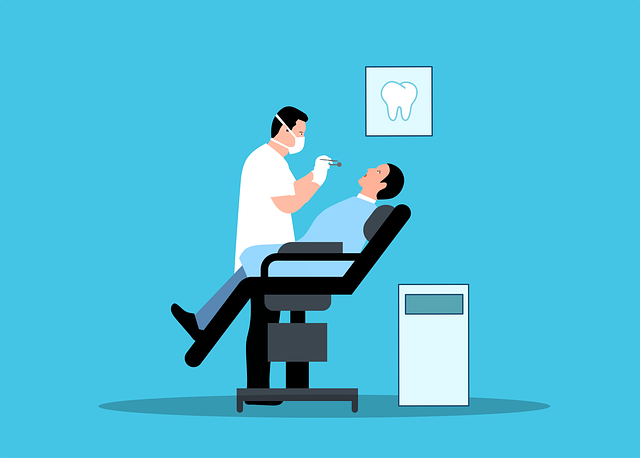Patient Appointment Scheduling: Streamline clinic operations and enhance patient satisfaction by integrating automated software with EMR systems. This technology eliminates manual errors, offers real-time management, reduces no-shows, and optimizes schedules. Key steps for implementation include assessing needs, selecting suitable software (focusing on user-friendliness and no-show management), configuring settings, and providing staff training. Success is measured through KPIs like no-show rates, wait times, and patient satisfaction scores, allowing continuous improvements based on data insights and patient feedback.
In the fast-paced world of healthcare, efficient patient appointment scheduling is paramount for both clinic efficiency and patient satisfaction. Traditional manual systems often lead to overbooked appointments, no-shows, and administrative bottlenecks. This article explores how automation can revolutionize scheduling processes. We’ll delve into the challenges of traditional methods, highlighting the numerous benefits of implementing an automated system. Learn about key features, implementation strategies, integration with existing software, and measurement of success for a seamless clinic management experience.
- Understanding the Challenges of Patient Appointment Scheduling
- The Benefits of Automating Scheduling Processes
- Key Features of an Efficient Patient Appointment System
- Implementing the System: A Step-by-Step Guide
- Integrating with Existing Clinic Management Software
- Measuring Success and Continuous Improvement
Understanding the Challenges of Patient Appointment Scheduling

Managing patient appointments can be a complex and time-consuming task for healthcare providers. The process often involves juggling multiple schedules, considering patient preferences, accommodating emergencies, and ensuring adequate staffing levels. These challenges can lead to inefficiencies, overbooked clinics, and frustrated patients. Traditional methods of scheduling often rely on manual coordination between staff, patients, and doctors, which is not only prone to errors but also consumes valuable time that could be spent directly caring for patients.
An effective solution lies in the integration of EMR (Electronic Medical Record) scheduling with automated appointment software. This technology streamlines the process by offering a centralized platform where appointments can be scheduled, managed, and viewed in real-time. By automating these tasks, healthcare providers can reduce administrative burdens, minimize no-shows, and optimize their clinic’s schedule, ultimately improving patient satisfaction and clinical efficiency.
The Benefits of Automating Scheduling Processes

Automating patient appointment scheduling offers a multitude of benefits for healthcare clinics, from increased efficiency to enhanced patient satisfaction. By implementing an automated system, practices can bid farewell to tedious manual scheduling, which is time-consuming and prone to errors. This technology streamlines the process, allowing administrators to focus on more critical tasks. With real-time availability updates and instant confirmation notifications, patients can easily book appointments that suit their schedules, leading to higher attendance rates.
Furthermore, an automated system seamlessly integrates with existing Electronic Medical Record (EMR) platforms, providing a unified view of patient data. This integration facilitates efficient no-show management strategies, such as automated reminders and rescheduling options, reducing appointment cancellations and maximizing clinic resources. Through scheduling automation, healthcare providers can optimize their operations, improve workflow management, and ultimately deliver better patient care.
Key Features of an Efficient Patient Appointment System

An efficient patient appointment system is pivotal for modern healthcare practices, offering a range of key features to streamline operations and enhance patient experiences. Firstly, it should provide an intuitive and user-friendly interface, allowing both staff and patients to easily navigate the scheduling process. This includes functionalities like online booking, where patients can select preferred timeslots, ensuring convenience and reducing no-shows.
Additionally, seamless calendar integration healthcare is a must, enabling real-time updates across multiple platforms. Scheduling automation plays a significant role here, automating reminders and notifications for upcoming appointments, which helps in improving time management and patient satisfaction. These features collectively contribute to an organised workflow, minimising administrative burdens on clinic staff.
Implementing the System: A Step-by-Step Guide

Implementing a patient appointment scheduling system can significantly streamline clinic operations and enhance patient experiences. Here’s a step-by-step guide to help you navigate this process effectively:
1. Assess Your Clinic’s Needs: Begin by evaluating your current scheduling practices, identifying pain points, and understanding the specific requirements of both patients and staff. Determine if you need a simple calendar management tool or a comprehensive appointment software with features like no-show management and EMR scheduling integration.
2. Select the Right Appointment Software: Based on your assessment, choose an appointment software that aligns with your clinic’s needs and budget. Look for user-friendly interfaces, robust features, and seamless EMR scheduling integration to ensure efficient data flow. Consider tools that offer automated reminders, online booking options, and real-time availability views to improve patient convenience and reduce no-shows.
3. Configure the System: Once selected, customize your chosen software to match your clinic’s branding, policies, and procedures. Set up patient profiles, define appointment types, and configure scheduling rules according to your workflow. Train staff on the new system to ensure smooth adoption.
4. Test and Implement: Conduct thorough testing of all features before full implementation. Simulate various scenarios, including booking, rescheduling, cancellations, and no-shows. Address any issues or bugs discovered during testing. After fine-tuning, roll out the system clinic-wide, providing ongoing support and training as needed.
Integrating with Existing Clinic Management Software

One of the key benefits of this innovative service is its seamless integration with existing clinic management software, such as Electronic Medical Records (EMR) systems. By incorporating patient appointment scheduling into the current workflow, healthcare providers can streamline their processes and enhance overall efficiency. The system offers a straightforward calendar integration healthcare solution, allowing staff to manage appointments within their familiar EMR interface. This consolidation eliminates the need for separate scheduling tools, simplifying time management and ensuring accurate record-keeping.
Through efficient scheduling automation, patients benefit from convenient booking options and timely reminders. Additionally, healthcare professionals gain valuable insights into real-time availability, enabling them to optimize appointment slots. This integration of scheduling automation with EMR scheduling ensures a well-organized clinic environment, improving patient satisfaction and fostering a positive experience from initial contact to treatment completion.
Measuring Success and Continuous Improvement

Measuring success is a vital component of any efficient patient appointment scheduling system. Key performance indicators (KPIs) such as reduction in no-show rates, improved average wait times, and higher patient satisfaction scores provide quantifiable metrics for gauging progress. By seamlessly integrating these data points into the clinic’s electronic medical record (EMR), the appointment software allows for comprehensive analysis and informed decision-making. This holistic view enables healthcare providers to identify areas for enhancement, fine-tune their processes, and continually optimize patient care.
Continuous improvement is fostered through regular audits of scheduling metrics and patient feedback. By identifying recurring issues like long booking queues or difficulties rescheduling appointments, the software can be adapted to address these challenges. Moreover, no-show management features play a crucial role in enhancing overall clinic efficiency by minimizing wasted resources and maximizing appointment availability for both patients in need and waitlists.
